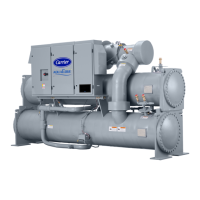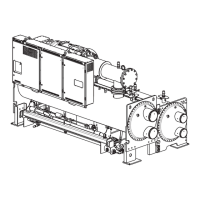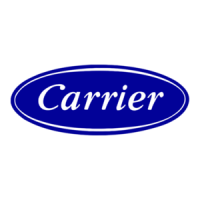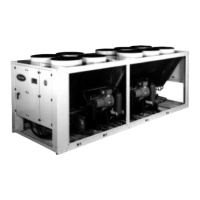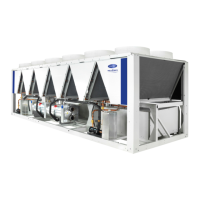64
Table 7 — Control Test Menu Functions
Charge Refrigerant into Chiller
The standard 23XL chiller is shipped with the refrigerant al-
ready charged in the vessels. However, the 23XL may be or-
dered with a nitrogen holding charge of 15 psig (103 kPa).
Evacuate the nitrogen from the entire chiller, and charge the
chiller from refrigerant cylinders.
CHILLER EQUALIZATION WITHOUT A PUMPOUT
UNIT
To equalize the pressure differential on a refrigerant isolated
23XL chiller, use the terminate lockout function of the CON-
TROL TEST on the SERVICE menu. This helps to turn on
pumps and advises the operator on proper procedures.
The following steps describe how to equalize refrigerant
pressure in an isolated 23XL chiller without a pumpout unit.
1. Access terminate lockout function on the CONTROL
TEST screen.
2.
3. Slowly open the refrigerant cooling isolation valve.
The chiller cooler and condenser pressures will gradu-
ally equalize. This process takes approximately
15 minutes.
4. Once the pressures have equalized, the cooler isolation
valve, the condenser isolation valve, and the hot gas
isolation valve may now be opened. Refer to Fig. 32-
35, for the location of the valves.
CHILLER EQUALIZATION WITH PUMPOUT UNIT —
The following steps describe how to equalize refrigerant pres-
sure on an isolated 23XL chiller using the pumpout unit.
1. Access the terminate lockout function on the CON-
TROL TEST screen.
2.
3. Open valve 4 on the pumpout unit and open valves 1a
and 1b on the chiller cooler and condenser, Fig. 32-35.
Slowly open valve 2 on the pumpout unit to equalize
the pressure. This process takes approximately
15 minutes.
4. Once the pressures have equalized, the discharge isola-
tion valve, cooler isolation valve, optional hot gas
bypass isolation valve, and the refrigerant isolation
valve can be opened. Close valves 1a and 1b, and all
pumpout unit valves.
TESTS TO BE
PERFORMED
DEVICES TESTED
1. CCM Thermistors
Entering Chilled Water
Leaving Chilled Water
Entering Condenser Water
Leaving Condenser Water
Remote Reset Sensor
Comp Discharge Temp
Oil Sump Temp
Comp Motor Winding Temp
Spare Temperature 1
Space Temperature 2
2. CCM Pressure
Transducers
Evaporator Pressure
Condenser Pressure
Spare Pressure Delta P
Condenser Water Delta P
Transducer Voltage Ref
3. Pumps
Chilled Water — Confirm Delta P
Condenser Water — Confirm
Delta P
4. Discrete Outputs
Oil Heater Relay
Hot Gas Bypass Relay
Tower Fan Relay Low
Tower Fan Relay High
Alarm Relay
Shunt Trip Relay
5. Slide Valve
Load (close); Unload (open)
6. Pumpdown
Lockout
When using pumpdown/lockout,observe
freeze up precautions when removing
charge:
Instructs operator which valves to close
and when.
Starts chilled water and
condenser water pumps and
confirms flows.
Monitors
Evaporator pressure
Condenser pressure
Evaporator temperature during
pumpout procedures
Turns pumps off after pumpdown.
Locks out compressor.
7. Terminate Lockout
Starts pumps and monitors flows.
Instructs operator which valves to open
and when.
Monitors
Evaporator pressure
Condenser pressure
Evaporator temperature during
charging process
Terminates compressor lockout.
8. Refrigerant Type
Sets the refrigerant type used: HFC-22
or HFC-134a.
The transfer, addition, or removal of refrigerant in spring
isolated chillers may place severe stress on external piping
if springs have not been blocked in both up and down
directions.
Always operate the condenser and chilled water pumps
during charging operations to prevent freeze-ups.
When equalizing refrigerant pressure on the 23XL chiller
after service work or during the initial chiller start-up,
do
not use the discharge isolation valve to equalize
. Either the
motor cooling isolation valve or the charging hose (con-
nected between the pumpout valves on top of the cooler
and condenser) should be used as the equalization valve.
Whenever turning the discharge isolation valve, be sure to
reattach the valve locking device. This prevents the valve
from opening or closing during service work or during
chiller operation.
Whenever turning the discharge isolation valve, be sure to
reattach the valve locking device. This prevents the valve
from opening or closing during service work or during
chiller operation.
IMPORTANT: Turn on the chilled water and
condenser water pumps to prevent freezing.
IMPORTANT: Turn on the chilled water and
condenser water pumps to prevent possible freezing.
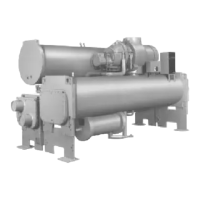
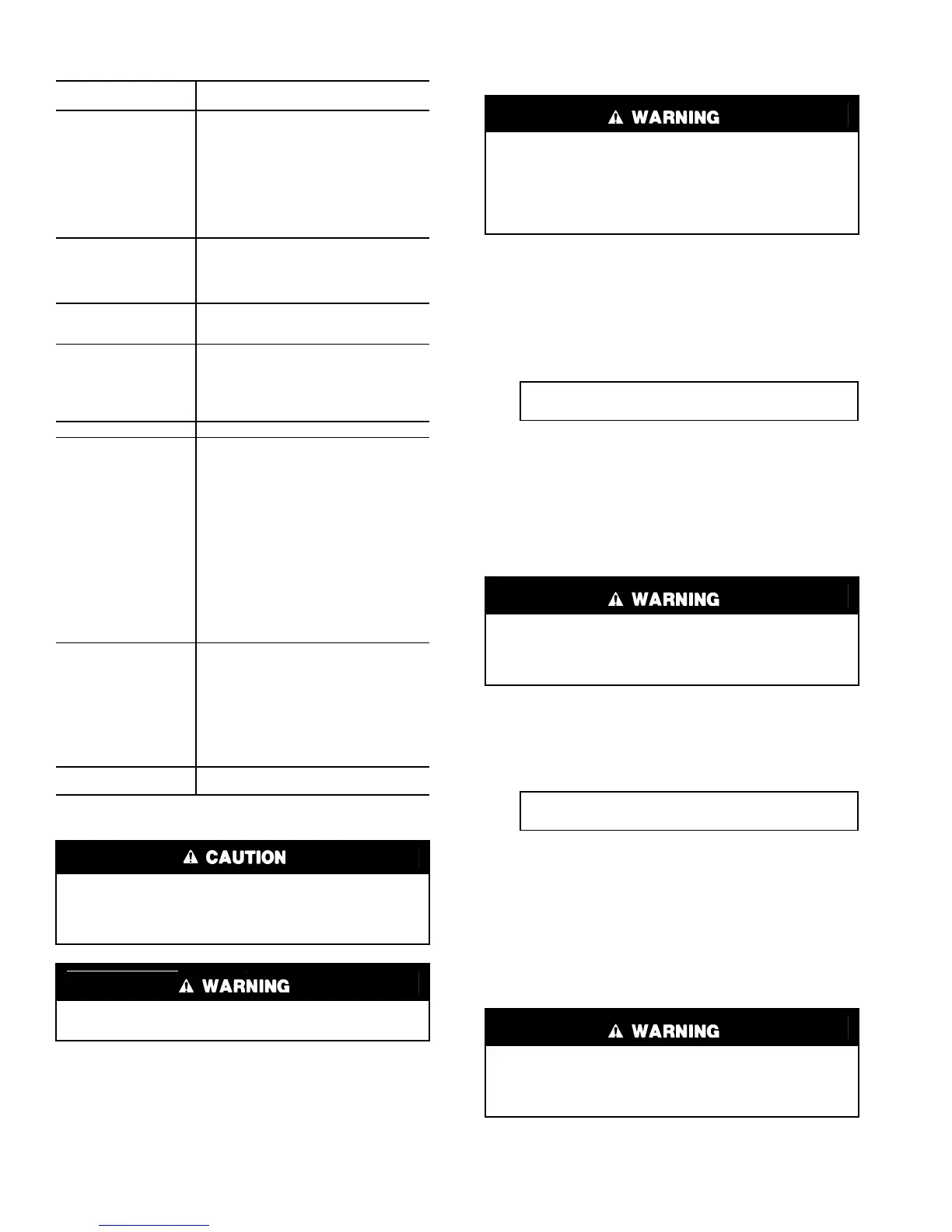